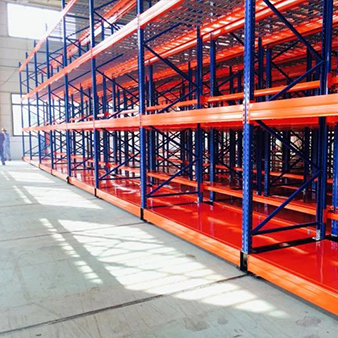The price of storage shelves can vary significantly based on several factors, including materials, design, size, load capacity, brand, and additional features. To save on procurement costs when purchasing storage shelves, consider the following strategies:
Determine Your Needs:
First, assess your storage requirements, including the type of items to be stored, the available space, and any specific storage conditions. Knowing your needs helps you avoid overbuying or underbuying shelves.
Budget Allocation:
Set a clear budget for your shelving purchase. This budget will guide your decisions and help you avoid overspending.
Material Selection:
Different shelving materials come at varying price points. Consider the materials that best suit your needs and budget. For example, steel shelving tends to be more expensive than plastic or particle board shelving.
Used or Refurbished Shelves:
Consider purchasing gently used or refurbished storage shelves. Many suppliers offer high-quality used shelving at a fraction of the cost of new units.
Compare Prices:
Shop around and compare prices from different suppliers. Look for discounts, promotions, or bulk purchase deals.
Consider Economy Shelves:
Economy or budget shelving options are available and can provide cost-effective storage solutions. While they may not have all the features of premium shelves, they can serve many storage needs.

Adjustable Shelving:
Choose shelving systems with adjustable shelves. This allows you to reconfigure the shelves as your storage needs change, reducing the need for additional purchases.
Simple Design:
Opt for simpler shelf designs that don't include unnecessary features or intricate designs. This can help cut costs without sacrificing functionality.
No-Frills Brands:
Consider lesser-known or generic brands that offer quality shelving at a lower cost compared to well-known brands.
Bulk Purchases:
Buying shelves in bulk can often lead to discounts or reduced unit costs. If you anticipate needing additional shelving in the future, consider this approach.
Local Suppliers:
Purchasing from local suppliers may reduce shipping costs and support the local economy.
Warranty and Maintenance:
Check for warranties or maintenance agreements that may reduce long-term costs by covering repairs and replacements.
DIY Assembly:
If you have the skills and resources, consider purchasing shelves that require self-assembly. This can be cost-effective, but be sure to factor in your time and effort.
Used Racking Systems:
In industrial settings, used pallet racking or shelving systems can provide substantial cost savings. These systems are designed for heavy-duty applications and can be cost-effective options.
Shelf Accessories:
Only purchase necessary accessories or add-ons, such as dividers or bins, rather than a full shelving system with integrated accessories.
Reevaluate and Reuse:
Before buying new shelving, assess your existing storage solutions and see if you can repurpose or reconfigure them to meet your current needs.
Negotiate with Suppliers:
Don't hesitate to negotiate prices with suppliers, especially for bulk orders or larger purchases. They may be willing to provide discounts or better terms.
Consider Long-Term Costs:
When evaluating costs, look beyond the initial purchase price. Consider factors like durability, maintenance, and energy efficiency that can affect long-term costs.
By carefully considering these factors and following cost-saving strategies, you can procure storage shelves that meet your needs without exceeding your budget. The above is the analysis of storage shelf manufacturers, if you have any questions and needs, you can contact us! We will provide you with satisfactory warehouse and storage solutions.